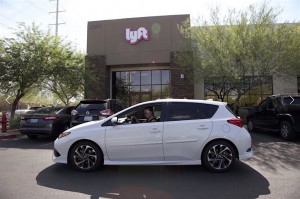A new study by researchers from three universities reveals that the consumers are likely to buy or lease fewer vehicles in areas served by ride-sharing companies, such as Uber or Lyft, or car-sharing oufits.
Researchers at the University of Michigan Transportation Research Institute, Texas A&M Transportation Institute and Columbia University surveyed more than 1,200 people in Austin, Texas, to examine how their habits changed after Uber and Lyft pulled drivers out of the city due to change in a local law.
“On-demand, ride-sourcing services have grown tremendously in the last decade and they promise a host of potential public benefits—reduced energy consumption and greenhouse gas emissions, easing of road congestion, as well as affordability, and accessibility,” said Robert Hampshire, a professor at UMTRI and lead author of the new study.
“However, we’ve yet to see empirical evidence of these benefits in the research literature. The suspension of services in Austin provided for a natural experiment to measure its impact on travel behavior,” he said.
(Left tracking to double ridership in 2017. For the story, Click Here.)
In areas where Uber, Lyft and other on-demand ride services operate, consumers may buy fewer cars and even take fewer trips, according to the study. The findings from Austin are among the first to quantify how the uptick in transportation networking companies could alter consumer behavior.

Uber and Lyft were forced to leave Austin, Texas, temporarily, allowing for the survey of residents there for the study.
In May 2016, Austin voters rejected a ballot measure that would have allowed the companies to keep using their own background-check systems.
The study found that 41% of those surveyed turned to their own vehicle to fill the void left by Uber and Lyft. Nine percent actually bought an additional car for this purpose.
Rounding out the respondents, 3% switched to public transit and 42% switched to another, smaller transportation networking company. After the vote, informal community efforts sprung up and 12 app-based ride services entered the market. Many were short-lived, but some are still in business.
(Click Here for details about Lyft’s development deal with Waymo.)
“Our findings show that these ride-sourcing companies do change behaviors,” Hampshire added. While this study doesn’t cover the entire city of Austin, or other cities, it provides crucial insights that are relevant to policymakers.
Statistical analysis revealed that the people who transitioned to a personal vehicle were 23 times more likely to report making more trips than those who switched to a different ride-sourcing company. Overall trips decreased after Uber and Lyft service was suspended. The average monthly frequency of the reference trips decreased from 5.65 to 2.01—a 68% drop.
The researchers found a correlation between the level of inconvenience reported and the likelihood that a survey participant would buy a car. Inconvenienced residents were more than five times more likely to buy a car.
In an unexpected finding, wealthier respondents were less likely to purchase a vehicle than those whose household income is below $100,000 a year. The researchers speculate that this is because those in a higher income bracket likely already had a vehicle at their disposal.
(“Passenger economy” will grow to $7 trillion by 2050, Intel predicts. Click Here for more.)
In May, Uber and Lyft relaunched their services in Austin. This was in response to Texas House Bill 100 which overrides local ordinances and creates a statewide regulatory framework for transportation network companies. The research team is continuing the research study to measure the impact of the re-entry of Uber and Lyft to Austin.

